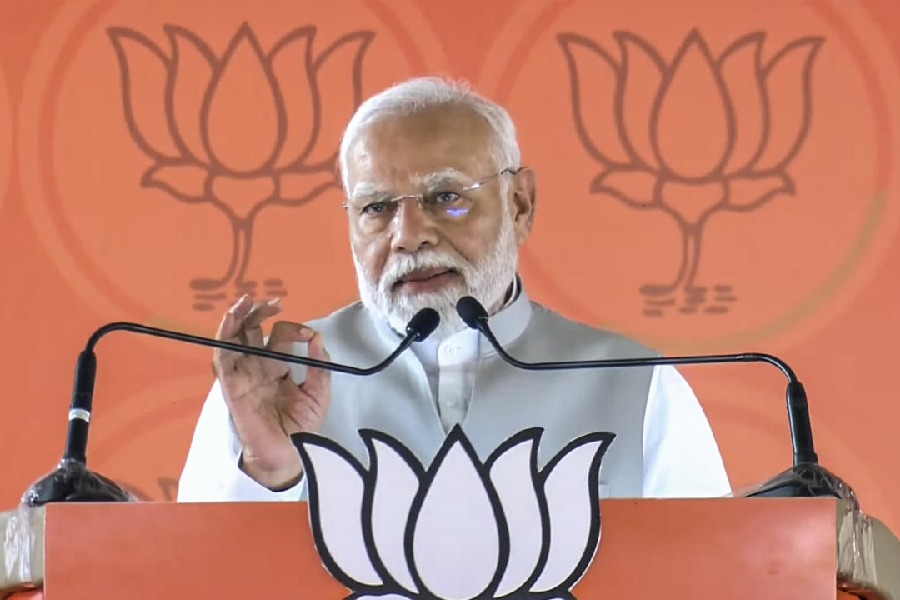Time, Doubt and Wonder in the Humanities: Between the Tick and the Tock By Prasanta Chakravarty, Bloomsbury, Rs 1,299
Peter Currell Brown is a man who has apparently lived life on his own terms, turning away from industrial labour (he was a factory worker when he wrote his only novel) to become an artisanal craftsperson making pottery and spinning wheels somewhere near Sherwood Forest. Born in 1936, he is still alive and can be heard reading from his 1965 novel, Smallcreep’s Day, in a 2008 YouTube video in his soft, musical voice. Brown’s surreal cult novel provided the occasion for the 1980 album Smallcreep’s Day, released by bassist-songwriter Mike Rutherford, one of the founders of the phenomenally popular English rock band, Genesis, which was a particular favourite of angsty (and slightly nerdy) teens back in the late 1970s and early 1980s. I discovered all this when I googled the subtitle of this collection of essays by Prasanta Chakravarty, which deals, as he puts it, with “the unstoppable and fragile existence of the temporal being, in the midst of all busyness and worldly concerns”. The persistence of such ‘unstoppable fragility’ can be found, as Chakravarty rightly notes, in many places and pieces, and he takes much care, especially in his analyses of poetry (nine of the 16 essays in the book discuss poets and poetry and another, “Minstrelsy”, looks at W.E.B. Du Bois’s interpretation and use of song to lay bare the souls of Black folk to others) to understand, analyse, and elucidate the implications of such fragility for our own distressed and fractured times.
Chakravarty casts his critical net wide and far and has interesting and intriguing things to say, not just about canonical authors and texts (including critics like Frank Kermode, Stephen Greenblatt et al, and authors ranging from John Milton to J.G. Ballard) but also comparatively lesser-known (to an English-speaking readership) ‘local’ authors, such as the Hindi poets, Ramkumar Chetankranti and Manmohan, or the Bengali versifiers, Pranabendu Dasgupta and Falguni Roy. In all his analyses, Chakravarty exhibits an acute political sensibility that takes into account the polarisation of thinking along sectarian lines that is vitiating the space of criticism in India in a “hostile, stigmatising environment, overwhelmed by threats... a time of horror and ennui”.
But Google is a cruel servant, as I discovered, to my dismay, when using it to fact-check the essay, “Literature and Silence”, on a personal favourite, the modernist English Quaker poet, Basil Bunting (1900-1985), and his long autobiographical poem, Briggflatts (1966). Here is the introductory paragraph to the subsection on the poem in Chakravarty’s essay, titled “Chthonic Power: Basil Bunting’s Briggflatts”: “Brigflatts Meeting House (spelled with one g in Quaker circles) in a Quaker Friends Meeting House near Sedbergh in Cumbria, England. Basil Bunting visited Brigflatts as a schoolboy when the family of one of his school-friends lived there, and it was at this time that he developed a strong attachment to his friend's sister, Peggy Greenbank, to whom the poem is dedicated. Bunting went to a Quaker school. The poem was first read in public on 22 December 1965 at the Morden Tower and published in 1966 by Fulcrum Press. Much later Bunting would follow up with a short sequel titled ‘At Briggflatts Meetinghouse’ (1975).”
And this is from the Wikipedia entry on Briggflatts: “Briggflatts is a long poem by Basil Bunting published in 1966. The work is subtitled ‘An Autobiography.’ The title ‘Briggflatts’ comes from the name of Brigflatts Meeting House (spelled with one ‘g’ in Quaker circles) in a Quaker Friends meeting house near Sedbergh in Cumbria, England. Bunting visited Brigflatts as a schoolboy when the family of one of his schoolfriends lived there, and it was at this time that he developed a strong attachment to his friend’s sister, Peggy Greenbank, to whom the poem is dedicated. It was first read in public on 22 December 1965 at the Morden Tower, and published in 1966 by Fulcrum Press. Bunting also wrote another poem with ‘Briggflatts’ in its title, the short work ‘At Briggflatts meetinghouse’ (1975).”
In spite of much rooting around in the revision history of the Briggflatts Wikipedia page, I was unable to determine which came first, Chakravarty’s essay or the Wikipedia entry. Textual evidence seems to suggest the latter, since the exact phrase “(spelled with one ‘g’ in Quaker circles)” makes its appearance in Wikipedia sometime between March 5 and November 1, 2015, whereas Chakravarty’s essay contains a reference to “Bunting and Brigglatts [sic], 2016”. When I tried to locate the provenance of the essay by Bunting, “The Poet’s Point of View”, from where Chakravarty provides a longish quotation, in the “Select References” appended to the essay, I found an entry with the date 2009, not 2016. In fact, the only book whose date of publication is given as 2016 in the References is the Bloodaxe Books edition of Briggflatts published from Hexham, UK.
None of this should detract from the virtues of Time, Doubt and Wonder in the Humanities, which are considerable, but I must confess to a nagging doubt as to whether there are more such instances of cut+paste that I have failed to detect in this otherwise commendable collection of essays. A doubt that can cast a retrospective shadow over the contents of the entire volume.
Perhaps, for solace, one ought to turn to the track, “Between the tick and the tock” from the Smallcreep’s Day album, where Mike Rutherford sings of how “It’s so very dark in here/…/ I can see no lights and what’s that sound/…/ And everywhere I look their eyes are watching me/…/ Every time I look the clock is calling me/ On the tick and the tock” and ends with, “And I can see a dying race, who live their lives/ On the tick and the tock, in between.” And, oh, I have already ordered online for a copy of Peter Currell Brown’s novel, which promises to be a more stimulating, bracing, and (most importantly) honest read than Chakravarty’s opus.










